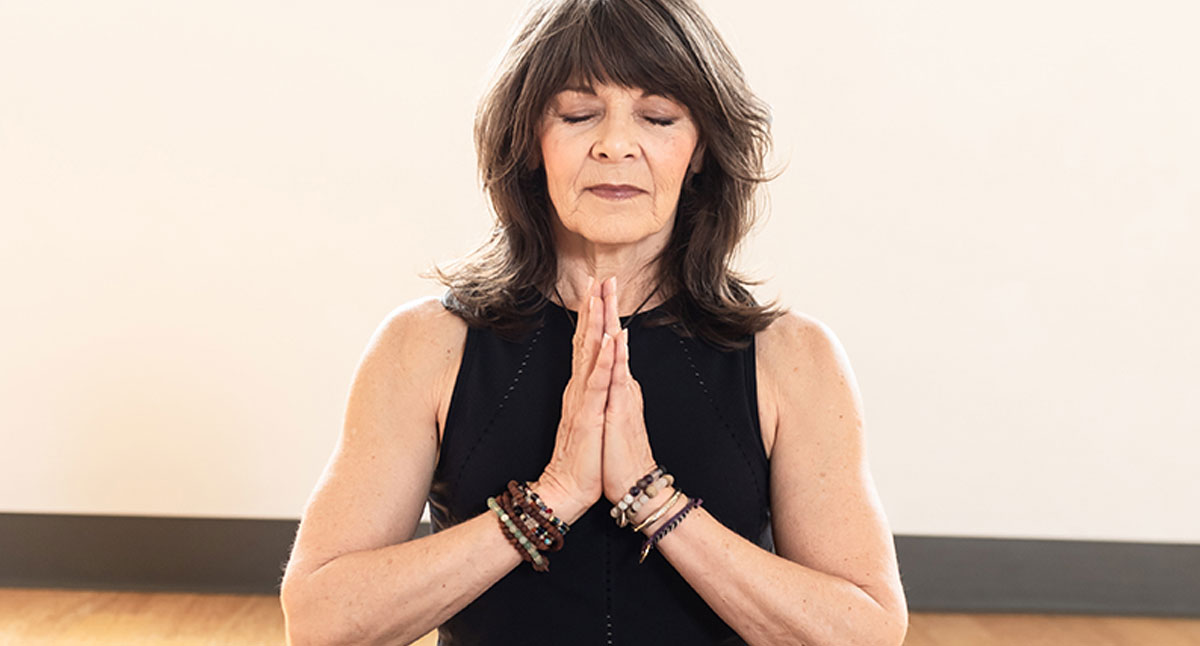This entry was posted on November 14, 2024 by Charlotte Bell.

In a recent article I wrote about the eight limbs of yoga. The Eight Limbs provide a framework for practicing all aspects of the yoga system. The first of these members is called yama.
I consider yama to be the foundation of the entire system. Yama means “restraint”. In this context, restraint refers to using wise discrimination to consider your actions in the world, in order to create an ethical foundation from which to act. The yamas are not commandments, however. These are guidelines for creating a peaceful life through your actions in the world. The yamas ask us to consider whether the actions we would like to take are likely to cause harm or bring happiness, to ourselves and others.
Like all branches of yoga, yama is a practice that we refine as we evolve in our lives. Applying the principles of the yamas in our lives requires that we consider them afresh in every situation in which we find ourselves. It is therefore essential to be attentive. The fact that there are no strict rules makes the practice dynamic and allows us to deepen our understanding as we move forward in our lives.
The following is a very simple and very short summary of the yamas. Everyone deserves a life of study and practice. If you’d like to learn more, my first book, Mindful Yoga, Mindful Life: A Guide for Everyday Practice, devotes a chapter to each yama and includes ways to incorporate the yamas into asana practice. Perhaps the information below can serve as a springboard for further investigation.
The five Yamas
Ahimsa (non-harmful)
If yama is the foundation of the eight limbs of yoga, then ahimsa is the foundation of this foundation. All other yamas are refinements of the concept of non-harm. Ahimsa asks us to think about the possible consequences of our actions. It also requires us to be conscious of our intentions. Alistair Shearer defines ahimsa as “dynamic peace”. I like this way of describing it because it means we don’t just avoid causing harm. We intentionally cultivate a peaceful way of being, so that over time, acting with kindness and care becomes automatic.
Satya (Truth)
Truthfulness is the foundation of all our interactions in the world. For a relationship to grow and prosper, it must be based on truth. Lying harms us by reinforcing lying as a habit. It harms others because they can never feel safe when they cannot trust our intentions, words, or actions. Again, mindfulness is key. In order to recognize the truth and then act on it, we must first know what is true. We do this by looking deeply at our beliefs, habits, and motivations.
Asteya (non-stealing)
Asteya asks us not to take what is not offered. This includes material goods (money, valuables) as well as intellectual property. We therefore do not “use” other people’s property if we are not invited to do so. In the same vein, asteya guides us to ask permission and credit others when we share their words and ideas.
Brahmacharya (Judicious use of sexuality)
Our sexual energy is the source of our creativity. It is a powerful energy that has great potential to bring happiness or cause harm if we use it incorrectly. Sexual encounters should always be consensual and should not be used simply for our own self-aggrandizement. The misuse of this energy, especially by those in positions of power, is pervasive in all areas, including the world of yoga. As with other yamas, wise practice is complicated. Donna Farhi’s book, Teaching Yoga: Exploring the Teacher-Student Relationship, delves deeper into the teacher-student relationship, including the practice of brahmacharya.
Aparigraha (Non-Greed)
According to Buddhist practice, greed is one of the three sources of suffering. (The others are hatred and illusion.) It is a source of suffering because it can never be satisfied; it can only be suppressed temporarily. When we get what we want, we can feel satisfied, at least for a while. But it doesn’t take long before another desire arises and causes us to pin our hopes on the next item we think we should have. Greed applies not only to material goods, but also to relationships, experiences, and the need for attention. The true sources of happiness are contentment, gratitude and appreciation of our life as it is. This does not mean that we should not try to achieve our aspirations. It simply means that we understand that everything in our life comes and goes. Happiness is accessible to everyone and its potential is already within us. The antidote to greed is to be generous. When we cultivate the habit of giving, we understand more deeply the joy of letting go.
Easy to do
Sometimes it can seem overwhelming trying to incorporate all of these principles into your life. I suggest committing to practicing one at a time. It may be helpful to commit, for example, to practicing just one yama for a year. Focusing on one principle can help you integrate it into your life more easily. Decide which of the yamas resonates most deeply for you. Then start applying it to the choices you make in your life.
About Charlotte Bell
Charlotte Bell discovered yoga in 1982 and began teaching in 1986. Charlotte is the author of Mindful Yoga, Mindful Life: A Guide for Everyday Practice, and Yoga for Meditators, both published by Rodmell Press. Her third book is Hip-Healthy Asana: The Yoga Practitioner’s Guide to Protecting the Hips and Avoiding SI Joint Pain (Shambhala Publications). She writes a monthly column for CATALYST magazine and is the editor-in-chief of Yoga U Online. Charlotte is a founding board member of GreenTREE Yoga, a nonprofit organization that brings yoga to underserved populations. A lifelong musician, Charlotte plays oboe and English horn in the Salt Lake Symphony and the folk sextet Red Rock Rondo, whose DVD won two Emmy Awards.
